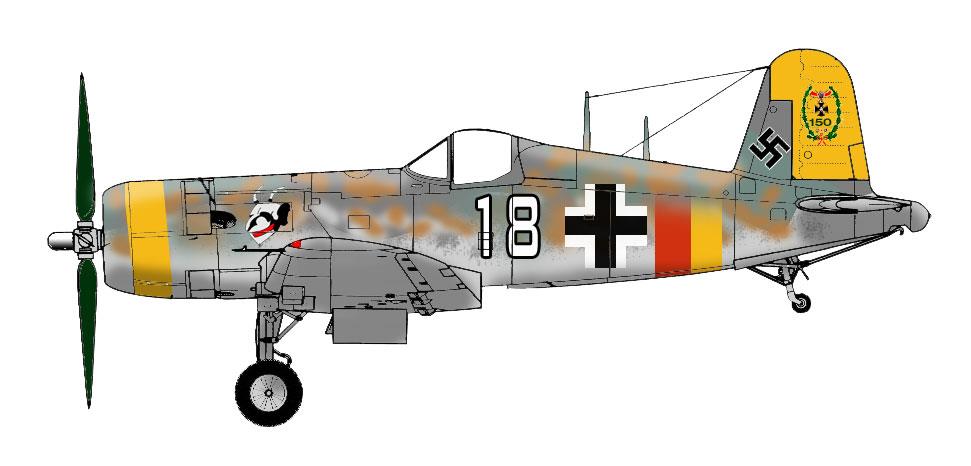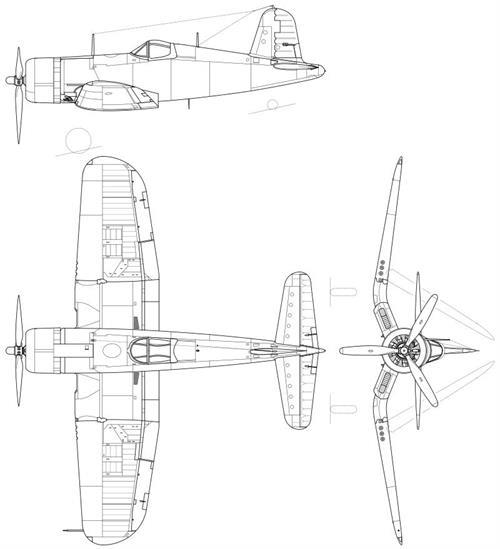| Type |
Single seat fighter |
| Engine |
1 Pratt % Whitney R-2800-18W with a 4bladed propeller |
| Dimensions |
Length 10,26 m , height 4,50 m , span 12,5 m, wing area 29,17 m2 , |
| Weights |
Empty 4288 kg, loaded 6592 kg , max. take off weight 6654 kg |
| Performance |
Max.. speed 717 km/h, cruising speed 346 km/h, stall speed 143 km/h, range 1617 km, combat range 528 km, endurance , service ceiling 12600 m , climb 22,1 m/sec. |
| Armament |
6 12.7 mm M2 Browning machine guns 375-400 rounds per gun Rockets: 8 12.7 cm high velocity aircraft rockets and/or bombs: 1,800 kg |

